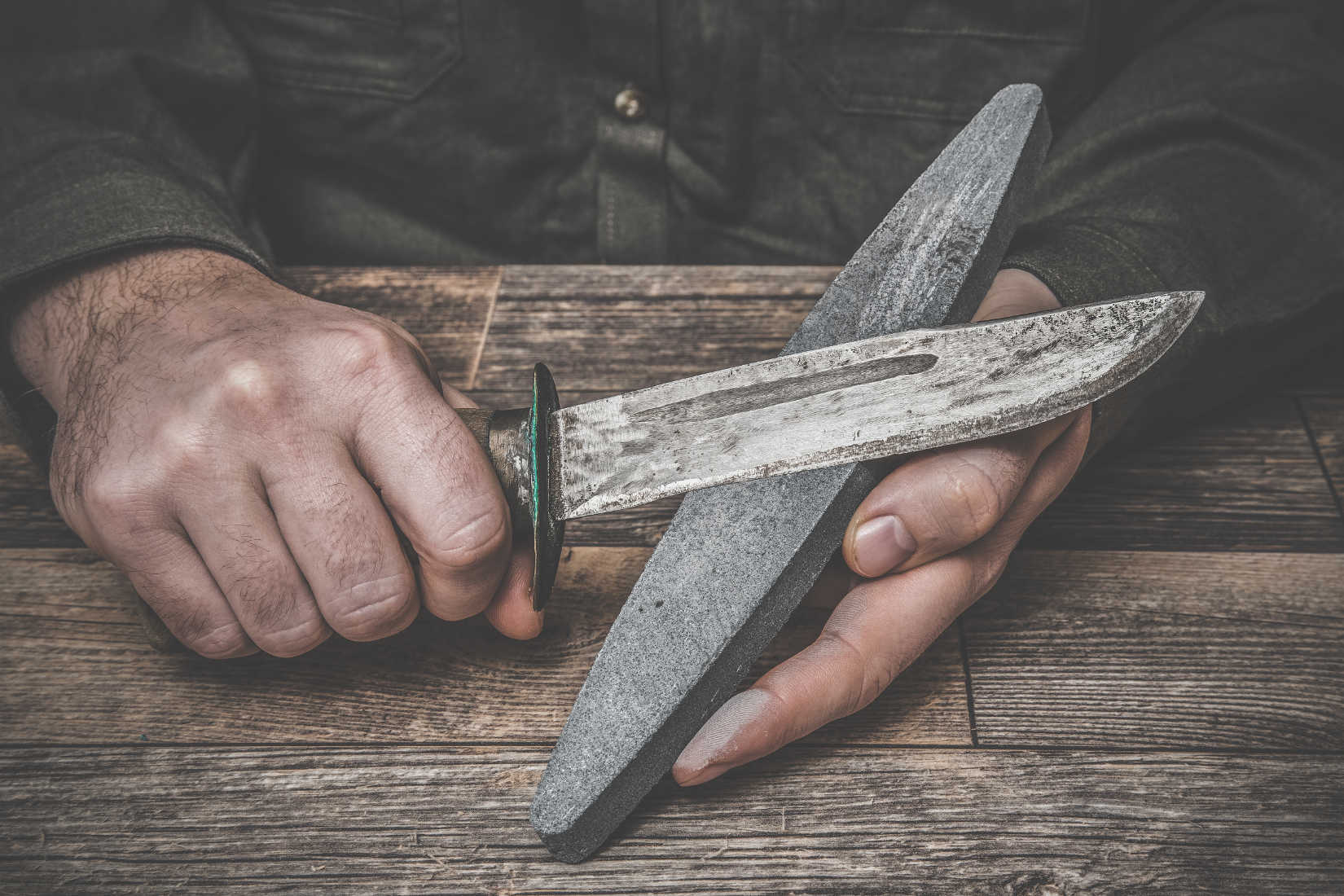By: Tom Claycomb III
Whether you’re a hunter, fisherman, backpacker, or even a birdwatcher, we all use knives; yet I bet less than 5% of us can sharpen one. I’ve probably written over 150 articles on knives and taught knife seminars from Texas to Alaska; I am always asked to cover sharpening techniques. So, let’s cover the basics of knife sharpening and see if we can’t help you out today.
I remember my first knife sharpening seminar nearly 25 yrs. ago. An old gentleman in attendance had a brown paper sack with him. About every 3-4 minutes he’d pull out some knife sharpening gizmo and ask me if I’d ever seen one of these. Finally, I stopped and asked him how many gizmos he had in his sack. I bet he dumped out 20. He must have bought every knife sharpening gizmo ever sold on TV.
We may laugh at the poor old gentleman, but unfortunately this scenario depicts the plight of most of us. Don’t panic, though — while it does take some skill to sharpen a knife, it doesn’t require a Ph.D.
There are many systems that employ a pre-set angled system. Do they work? Yes, but I encourage you to learn how to sharpen your knife on a stone – the old way; then you’ll have a sense of pride upon conquering this skill.
You see some people cutting into the stone, some sliding the knife backwards and some even rubbing their knife in a circular motion. Which is the correct method? All will work if you learn to master them, but to keep it simple. I teach everyone to cut into the stone three times and then alternate to the other side.
Use the same angle all the way down the length of the blade. Most people flatten out the angle when they get towards the tip of the blade. To prevent this, I tell everyone to lift their elbow as they enter the curvature of the blade. You can have a partner in front, watching to make sure you maintain the same angle all the way down the blade.
In the old days, all our granddads used was a smooth Arkansas stone. That worked then because the metal was softer, but nowadays most knives are so hard that you’d work forever with a smooth stone, so I recommend using a fine diamond stone. With a diamond stone you can get an edge in 2-3 minutes. I use the Smith’s fine diamond 2.5-inches x 6-inch stone. The diamond chips seem more uniform in the Smith’s stone than most other diamond stones I’ve seen.
What’s the perfect angle? In the old days most knives were pushing 30 degrees. Now you see them at 25 degrees on down to 14 degrees. A sharper angle tells you that they’re made of harder metal. In the old days they couldn’t get much past 28 degrees or the edge would roll or chip, but due to the harder metal that manufacturers are using currently, knives can utilize smaller angles. So, to answer the question: what is the best angle for sharpening my knife? Just use the angle that the knife came with from the factory.
Which is the best, soft or hard metal? This choice is a matter of preference. A soft knife is easier to sharpen, but it gets dull faster. A hard knife is harder to sharpen, but it stays sharp longer. Duration is nice when skinning an animal on top of a mountain and do not have a stone with you.
What’s the best stone to buy? I’d suggest that you buy two. A Smith’s fine diamond (orange-depicts fine grit) stone and a smooth Arkansas stone to obtain a fine edge. The ultimate set-up is the Smith’s Consumer Products 3-way, 8-inch stone.
What about grinders? If you know what you’re doing, they’re fine; but if you don’t, you can grind down the life of a blade muy pronto. Remember, a knife only has so many grindings in it before the blade is ground down to a toothpick. It doesn’t matter if you’re grinding by hand on a stone, with a belt sander or an electric grinder. If you break off a tip, of course, you’ll have to use a grinder to reshape the blade, but a knife only lasts for a certain amount of sharpening’s.
Make sure that you have a good knife. I was teaching a Knife Sharpening seminar at a SWH store in Colorado in 2006, and the manager of the store told me that the main reason that he had me in was because he couldn’t sharpen a knife. In the seminar, he worked on his knife for a while and couldn’t get it. No wonder. It was a cheap piece of junk from China. So maybe your problem is that you have a cheap knife.
To begin, it’s probably best to practice on a knife with softer metal so you can build your confidence. If you’re 85% there, Stop! There’s a good chance that you’ll go south if you keep messing with it. I know that it can be frustrating when you’re starting. I have an e-article on Amazon Kindle titled “Knife Sharpening.” Good luck.
-Use some stone oil when using an Arkansas stone.
-To clean your diamond stone, wash the surface with warm soapy water to remove the metal filings.
-Sharpen using three strokes on one side and then three on the other side while cutting into the stone.
-If you use a grinder or sander, be careful, you can eat away the blade in a hot second.

